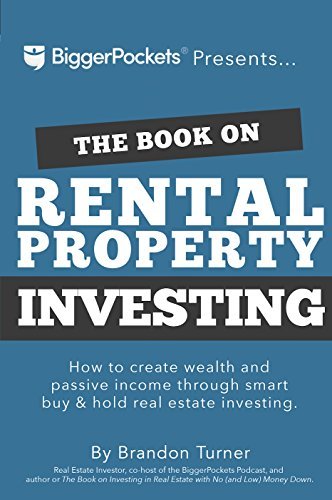If you want to get into rental property investing, you have to understand how financing works. Most people use conventional financing, so that is what we are going to be talking about today.
Conventional financing is using a bank or financial institution as a lender. These lenders typically package up their mortgages and sell them to a lender like Fannie Mae or Freddie Mac.
Most people use conventional financing because banks grant stability, lower interest rates, and consistency.
Convincing the Bank to Approve Your Loan

Before we get into the 12 steps to get a loan for a rental property, we need to understand who actually approves the loan. It isn’t the guy who you present the offer to, it is the guy who he presents it to.
Normally the guy who you talk to about the loan is just a salesperson. These guys get a few weeks of training and then get thrown into the high-pressure environment of getting as many good offers approved as possible. The salesperson then presents the offer to the underwriter, who makes the end decision whether to approve or decline the loan.
Underwriters are people who have been specifically trained to examine all of the puzzle pieces in offers, and they study of all the rules and regulations to make an informed decision.
If you want the underwriter to hear your story, there are two things you have to do:
- Convince the salesperson that you and your loan are worthy.
- Convince the salesperson to convince the underwriter that you and your loan are worthy.
So to understand how to get a loan approved, you need to understand how an underwriter thinks.
The Underwriter Mentality
“No deal is better than a bad deal.” -Every underwriter, businessman, and investor ever.
Believe it or not, underwriters want to approve your loan. It may seem like a lot of people get turned down, but the more loans they approve, the more money they make. Whether it is a 4%, 6%, or 8% interest rate, that is the amount of money they are making back, on top of what you owe. It is basically free money for them, as long as they make good bets.
That is the issue. What constitutes a good bet, and what constitutes a bad bet?
They look at these 12 steps to ensure that they are getting a good deal. There may be more requirements or less depending on where you are and who you try to get financing from, but these are the general steps that will guarantee you a good loan:
1. Property Type
Some lenders only loan on certain types of properties. For example, a residential lender will only lend to you if you are buying a property that is under 5 units. If you present them with an offer for a retail store, or an 8-unit building, it will be declined.
There are many ways to get a property financed, and it doesn’t have to be through conventional financing. You can use private money lenders, hard money lenders, partners, or other methods of financing. But to get a loan for a rental property through conventional methods, you need to find a lender that appeals to your property, whether commercial or residential.
2. Location
The location of the property depends on the individual lender. Ask them what properties they will and will not lend in, because they typically have a list.
If there is a property on the bad side of town, there is a chance that a conventional lender won’t give you the money for it, and you will have to find it through other means.
3. Property Condition
Most banks will only finance a property that is in good condition, but as a lot of us know, a lot of good real estate deals are found when you look at distressed properties.
Fixer-upper properties can provide the best bang for your buck, but you will typically have to find other means of financing if these are the properties you are going for.
Banks and other conventional lenders prioritize safety over everything, and they want to ensure that if they are forced to foreclose on the property, they will be able to re-sell it at a good value.
4. Loan Amount
A lot of banks have requirements in order to finance a property. This only applies to certain situations, but in an event where the amount of money you need does not meet a certain bank’s minimum, you will more than likely hear a “no” when asking about financing.
5. Debt-to-Income Ratio
Lenders use a ratio to determine if you can afford the property without a lot of risk. To do this, they look at your debt-to-income ratio. This tells them how leveraged you are, and if you can take on another loan.
The debt-to-income ratio is a percentage based on the relationship between your debt and your income.
There are two different types of numbers that lenders care about, so let’s go over both:
- Front-End DTI Ratio
Your front-end DTI ratio depicts the relationship between your monthly debt payment and your monthly income on the specific property. So if your monthly mortgage payment is $500, and you have a monthly income is $1,500, then you have a front-end DTI ratio of 33.3%, or .333.
Monthly Debt Payment / Monthly Income = DTI Percentage
$500 / $1,500 = 33.3%
33.3% = .333 Ratio
- Back-End DTI Ratio
The back-end ratio is the more important of the two when you are trying to get a refinance. The back-end is similar to the front-end, except that the back-end refers to the total debt compared to total monthly income.
Essentially, this includes all of your investments, your job, your side hustles, and everything. It includes your car loan, your primary residence, everything you owe money on.
This follows the same formula, just add in everything.
Assuming you get $3,000 monthly from your job on top of that $1,500 from your property, you have a monthly income of $4,500. Let’s assume you have that mortgage payment of $500, a primary residence payment of $700, a car payment of $300, and a credit card payment of $500.
$2,000 / $4,500 = 44.4% DTI Percentage
44.4% = .44 Ratio
There you go. You have a 44% DTI Ratio. Different banks will require different ratios, so check with your lender. The goal here is to keep the number as low as possible if you want to get a loan for a rental property.
6. Loan-to-Value Ratio
Another statistic that comes into play is the loan-to-value ratio (LTV).
A lender’s top priority is to avoid risk. They want to ensure that things will turn out alright for them in the future, no matter what happens. The formula for doing this with the LTV ratio is as follows:
Mortgage Amount / Appraised Property Value = LTV
Essentially, the bank wants to ensure that the buyer will have enough equity in the home so that in the case of a possible foreclosure, the bank will be able to re-sell the home and turn out in a good spot. The more equity the buyer has, that’s more that the bank will have if the loan ever defaults.
So if you want to put $20,000 down for a $100,000 property, the LTV would be $80,000, or 80%, because:
$80,000 Mortgage / $100,000 Property Value = 0.8 or 80%
Check and see the LTV that most banks shoot for with conventional financing options.
7. Credit Score
A buyer’s credit score determines their trustworthiness. If you frequently miss payments, your credit score will reflect that. If you are always on-top of your payments, your credit score will reflect that. Smart financial decisions will be rewarded with trust from the lender.
You can visit a place like creditkarma.com to check your credit score for free, and then make steps to improve it if need be. There are many online resources for this that you don’t need to pay for!
8. Repayment Source
If you are trying to get a loan for a rental property, chances are you want your tenant to make the monthly payments, no you. The bank understands this, but like I said before— “No deal is better than a bad deal.”
Loans aren’t just for your benefit, they are benefiting the lender as well. You need to make sure that you have adequate resources to pay back the loan even if the tenant leaves. The lenders will check this, and if you have no other source of income, you can expect a firm no.
Rental income from other properties typically count towards the repayment source, but lenders will normally only grant you 70-80% of what you actually make, just to make room for potential vacancies in the future.
Your main repayment source will be our job. Lenders want stability. If you show that you have been at a job for more than a few months, you are making income to cover the rent including a portion of your rental income, and you have shown good things with your history, your chances of getting a loan drastically increase.
9. Experience
Obviously, you can get a loan without experience. But you will be severely limited to what you have access to.
The more experience you have, the more confidence the lender will have in your ability to make it in the hard times. Remember, when you fail to pay on a loan, the banks fail as well. They want you to make your loan payment, because then they can make their payments. It’s a debt cycle.
So if you show that you have the ingenuity to make it in the hard times, and you have been in the game for a while, you will have access to greater financing opportunities because banks will have a greater trust in you.
10. Cash Reserves
Cash reserves are needed for an investor anyways, not having them would not be a very strategic move, but you need them when trying to get a loan for a rental property as well.
Lenders want to see that you will be able to weather a storm. Roof caves in? They want to see that you have the cash reserves to pay for it. Tenant leaves and the property is vacant? They want to see that you can cover a few months of vacancy.
Make sure you have some money set aside outside of the deal to deal with any unexpected occurrences that may arise.
11. Recent Credit Changes
If you want to get a loan, then you want to avoid making changes in your credit before the deal. Like I said, lenders want stability. Taking on new debt and opening new accounts soon before going in for financing is not a good look for stability, and it will decrease your chances of getting approved.
12. Compensating Factors
Let’s be honest here: The 11 steps prior to the compensating factors helps, but you don’t need to nail each one down. You can compensate for anything that may be lacking in the deal— within reason.
You will be talking to a real, live person. Even though it may not be the underwriter itself, you will be talking to the one who is. They want a good deal just as much as you do.
“Banks are your friends. They make money by loaning you money.” -Ben Mallah
The more money they loan out, the more money they can bring in. It’s up to YOU to convince them that you have a great deal.
So if your credit score is slightly lacking, but your LTV is extremely safe, the underwriter might approve the loan anyways because it could still appear to be a good deal. Each deal has its own individual situation, and you never know until you ask.
The 12 Steps to Get a Loan for a Rental Property
The information in this article was provided by Brandon Turner in his book, The Book on Rental Property Investing.
The Book on Rental Property Investing is widely regarded as the best overall book for people investing in real estate. It delivers great, organized information to readers answering questions such as: How to get a loan for a rental property, how to use the MLS to find deals, finding a great real estate agent, and more!
The Book on Rental Property Investing is an Amazon bestseller and sits at the #1 book for real estate investors on many sources, such as Forbes, Motley Fool, and Real Wealth Network. This book is a great guide for beginner and intermediate investors to get started in real estate, by sharing Brandon Turner’s personal story along with experiences with other real estate investors. These real-life examples are coupled with hard facts and formulas to ensure success for any real estate investor.

Brandon Turner is a real estate investor who works as the VP of Growth for BiggerPockets, the largest real estate community in the country. Turner has amassed an amazing portfolio of around 300 rental units since beginning 13 years ago, and now spends his time teaching via books, Youtube, BiggerPockets, and podcasts.




Amazing strategies to get a loan for rental properties. I never knew there were so many other ways to get cash flow in rental properties. I always thought you had to use your own money, thus never went ahead for it.
Thank you for teaching us more in this area.
Best Wishes
Thank you so much for this highly informative article! I’m currently in the process of trying to buy my first home, and I want to make sure that I’m covering all of my tracks. I have a six-figure grad school debt (law school), and that has negatively affected my credit score (I’m current on all payments and am on top of all my bills). As such, I know that it will be hard for me to get approved for a loan. I am going to use your tips to continue to conduct research on the best loans for me. Great read! God bless you!